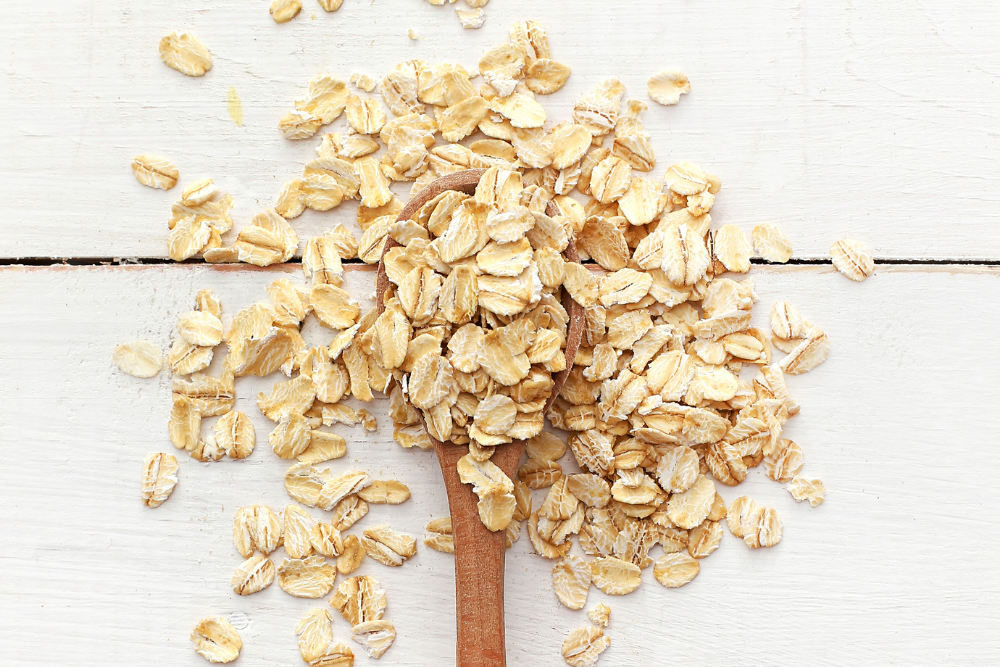
Oats are a controversial ingredient in the gluten-free space, and you might be wondering, are oats gluten-free? And, if there is gluten in oats, what can you do to stay safe? I get to the bottom of it all in this important article. I also test six brands of gluten-free oats for hidden gluten with my Nima Sensor. This article contains affiliate links. Please read my disclosures.
There is a lot of confusing and contradictory information about oats floating around in the gluten-free community, all of which make it hard for people with celiac disease and non-celiac gluten sensitivity to know what to believe and who to trust.
As a student of journalism and certified integrative nutrition coach specializing in gluten disorders, I want to get to the bottom of this controversial topic and explain why oats (and oatmeal) are complicated and confusing.
I also want to help you rise above the rumors and hysteria; misinformation quickly spreads on Facebook and by well-meaning but misinformed friends.
My goal is to present a balanced look at the world of gluten-free oats, including a factual conversation about the safety of purity vs. commodity oats and why the gluten-free community’s relationship with oats is complicated.
I hope this information will empower you to decide whether or not to eat oats (or drink oat milk), what brands of oats are gluten-free and safe, and ultimately determine what is right for you.
Is There Gluten in Oats?
While oats are naturally gluten-free, they’re grown in rotation with wheat and utilize the same equipment used to harvest and manufacture wheat. This means that oats are highly cross-contaminated with wheat throughout the entire growing and manufacturing process.
Some manufacturers utilize oats grown on dedicated gluten-free fields, known as purity oats, while others utilize optically and/or mechanically sorted oats, known as commodity oats. I discuss purity vs. commodity oats later in this article.
A product containing oats must be labeled “gluten-free” for it to be considered safe for people with celiac disease and non-celiac gluten sensitivity.
For example, Nature Valley Oats ‘N Honey bars appear to be gluten-free based on the ingredient list, but because it contains oats, one cannot assume it’s gluten-free. My independent testing of the bars with my Nima Sensor, a portable gluten-detecting device, confirmed that the product contains detectable levels of gluten (although Nima cannot tell you how many parts per million – or ppm – of gluten it contains).
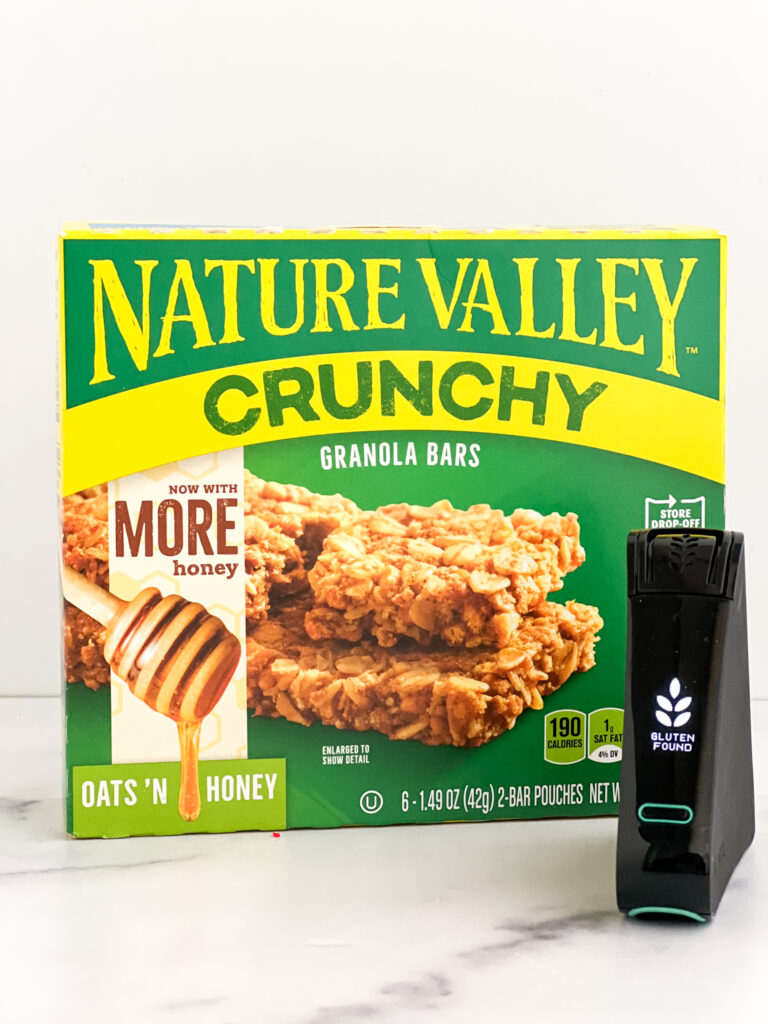
When a product containing oats is labeled gluten-free, it means the manufacturer has validated that the product contains less than 20 parts per million (ppm) of gluten, the threshold of gluten allowed in a product per the FDA’s gluten-free labeling guidelines.
Even better, if a product is certified gluten-free, it means the product has been verified to contain less than 20 ppm of gluten (or even less than 10 ppm) by a third party, like the GFCO. It also demonstrates that the manufacturer has taken additional steps to ensure the safety of the oats and final product.
Regardless of what oats you purchase, purity, or commodity, you must ensure the packaging is labeled “gluten-free” or “certified gluten-free.”
Bottom line: Oats are naturally gluten-free; however, they are cross-contaminated with bits of wheat during their lifecycle. If you’re following a gluten-free diet, only eat oats or products made with oats labeled “gluten-free” or “certified gluten-free.”
Purity Protocol vs. Commodity Oats
There are two types of gluten-free oats commercially available on the market: Purity and commodity oats.
Purity Protocol Oats
Purity protocol oats are grown on dedicated oat fields using dedicated harvesting and packaging equipment, making some believe they are safe from the field to the grocery store.
Purity oats are typically more expensive than commodity oats because they’re more labor-intensive. In turn, products made with purity oats are more expensive.
Gluten-free brands that only use purity protocol oats include:
- Canyon Bakehouse says it sources its oats from a company that created the gluten-free oat purity protocol, as you can verify from the following screenshot posted on the Canyon Bakehouse website.

- Elmhurst makes oat milk using oats certified gluten-free by the GFCO and made with purity protocol-grown oats.
- Enjoy Life says the oat flour used in select products comes from purity protocol oats.
- GF Harvest (?) – see notes below
- Gluten-Free Prairie uses purity protocol oats.
- Grainful uses purity protocol oats.
- Made Good Foods says, “The oats we use come from an industry-leading producer of pure, uncontaminated, organic, certified gluten-free oats through its Purity Protocol.”
- Montana Gluten Free says, “[We] developed the original Gluten Free Oat Purity Protocol in 2003 to ensure that our oats stay gluten-free, from farm to fork.”
- Nairn’s oats may not be fully purity protocol; the company says, “These farms grow oats completely separately and go to extraordinary lengths to avoid wheat or barley slipping into the mix, either in the field or from equipment.”
- Trader Joe’s (?) – see notes below.
- ZEGO Foods says, “Our oats are grown by a specific group of farmers in the western region of the U.S. who use purity protocol growing methods.”
About GF Harvest Oats
GF Harvest says its products are made with purity protocol oats and are certified gluten-free by the GFCO. On the packaging, the company says, “We control each part of the growing, milling, and production process.”
Unfortunately, several Nima Sensor users received “gluten found” messages when they tested the product. These users informed The Gluten-Free Watchdog of their tests, and the Gluten-Free Watchdog then sent those exact samples – and additional bags of oat flour – to a lab for further testing using the sandwich R5 ELISA test.
The ELISA test found quantifiable levels of gluten in four out of five bags of GF Harvest oat flour. Specifically, the Watchdog says these products tested between six and 32 ppm of gluten. (Best by date 06/23, Lot # 0452.001.9.007.)
Who can the gluten-free community trust if GF Harvest oats are made under purity protocol but still contain detectable levels of gluten? This is why purity protocol isn’t enough and almost gives the GF community a false sense of security. Instead, regardless of what kind of oats are used, they should be tested and verified gluten free at every step of the process. More on that in a bit.
I tested a package of GF Harvest oats (not oat flour) with my Nima Sensor, and Nima didn’t detect any gluten. This makes me believe some batches may have been exposed to gluten while others are fine or that the contamination exists in their oat flour vs. their rolled oats facility.
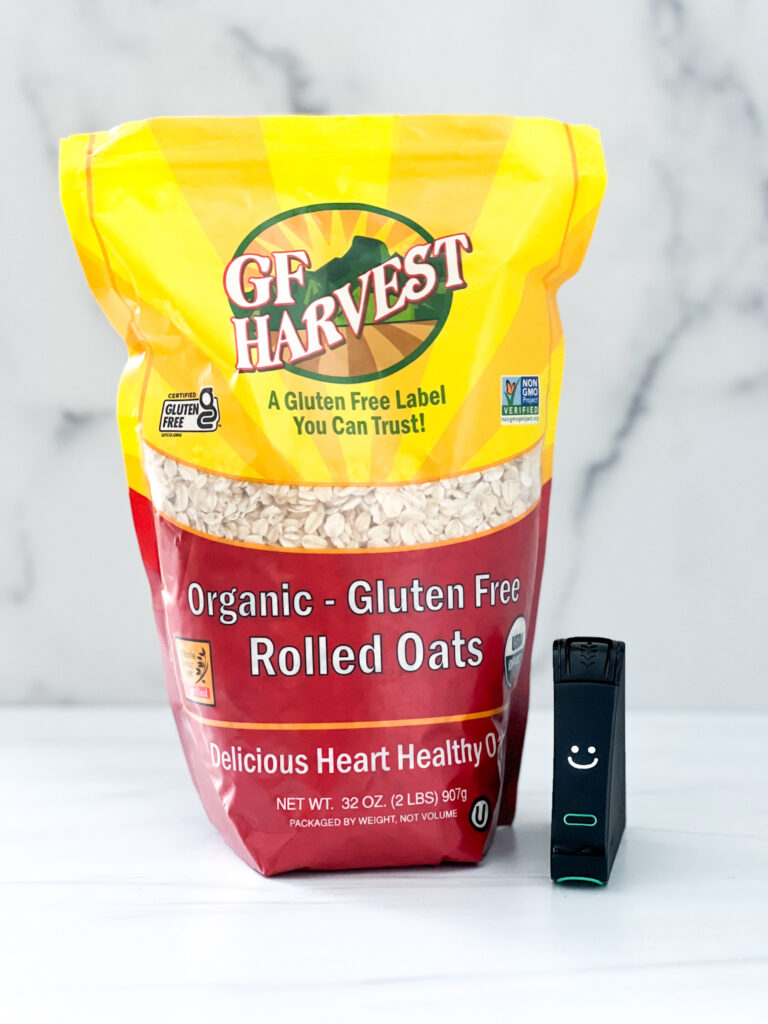
About Trader Joe’s Oats
Trader Joe’s says on the packaging of its gluten-free rolled oats that it uses oats grown on dedicated gluten-free fields, implying that the oats are purity protocol oats.
However, in 2022, The Gluten Free Watchdog said she was unable to track down the source of the oats, and based on her latest testing, the amount of gluten can vary from < 5 ppm to > 80 ppm, which are above the less than 20 ppm gluten threshold set forth by the FDA.
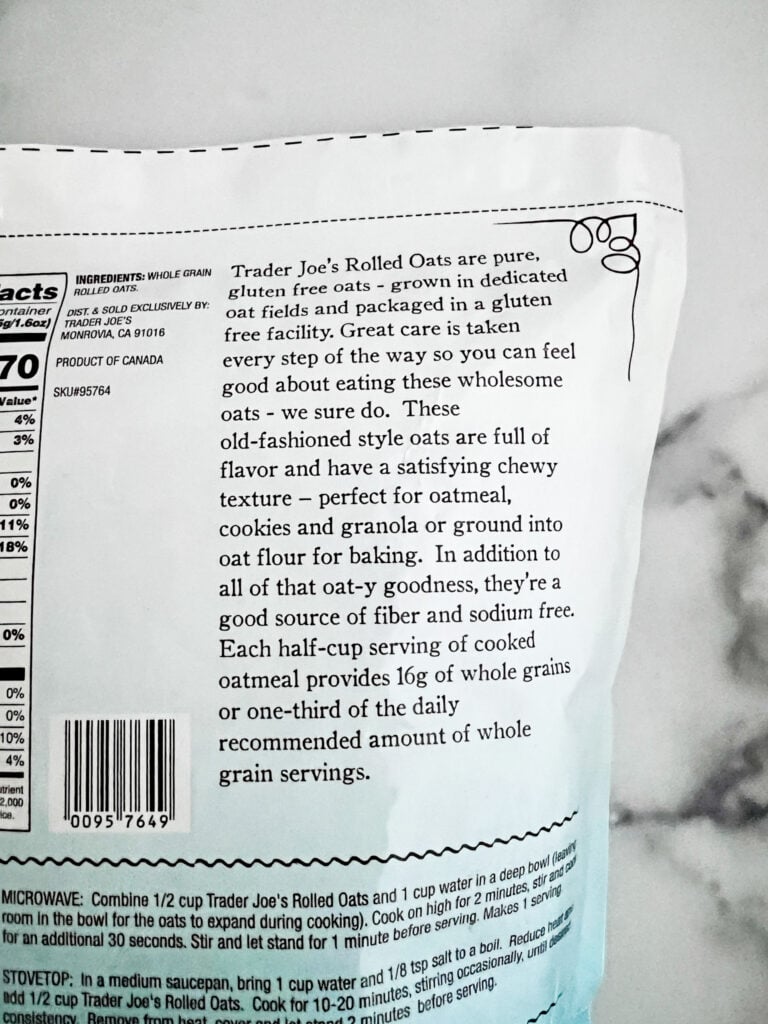
I tested Trader Joe’s gluten-free labeled rolled oats in 2021 for hidden gluten with my Nima Sensor. Nima didn’t detect any gluten. I tested the oats again in late 2022, and Nima didn’t find any gluten. The following oats have a best buy date of August 26, 2023 (the oats tested by the Watchdog had a best buy date of August 18, 2023).

Commodity Oats
Large manufacturers, like Quaker Oats and Bob’s Red Mill, may find it difficult to secure enough purity oats to satisfy the demand for their products and keep their prices competitive. This is why mainstream brands turn to commodity oats instead.
Commodity oats are grown on fields that also grow wheat and therefore are cross-contaminated with wheat.
However, manufacturers have created technology that enables them to optically or mechanically sort the oat grains from the wheat kernels. The oats are also scrubbed to remove any wheat dust.
Large-sized companies rely on commodity gluten-free oats to meet consumer demand for gluten-free oats and to remain competitive in their pricing.
Brands that use commodity gluten-free oats (or a mixture of commodity and purity oats) include:
- Bob’s Red Mill uses a combination of commodity and purity oats. See below for more details.
- General Mills uses mechanically sifted commodity oats. See below for details on Cheerios.
- Nature’s Path uses commodity oats labeled (but not certified) gluten free. Nima didn’t find any hidden gluten.
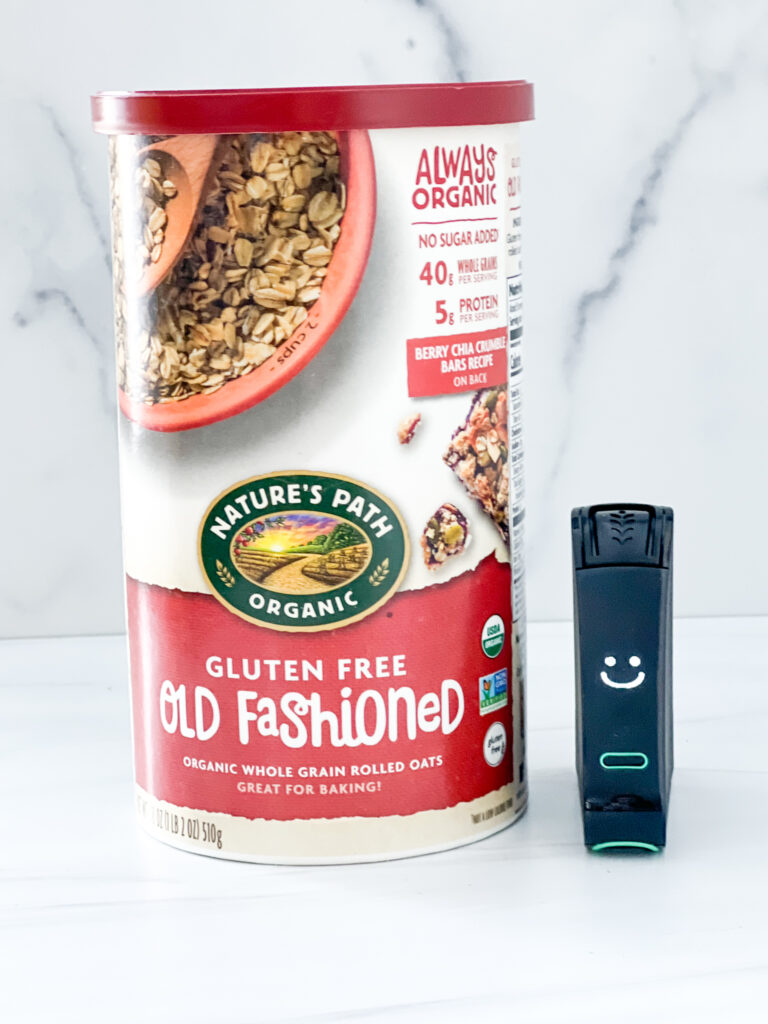
- One Degree says it works with farmers who use “geographic separation” of oats from wheat, then it mechanically sorts the oats. I tested it for hidden gluten, and Nima didn’t find any gluten.
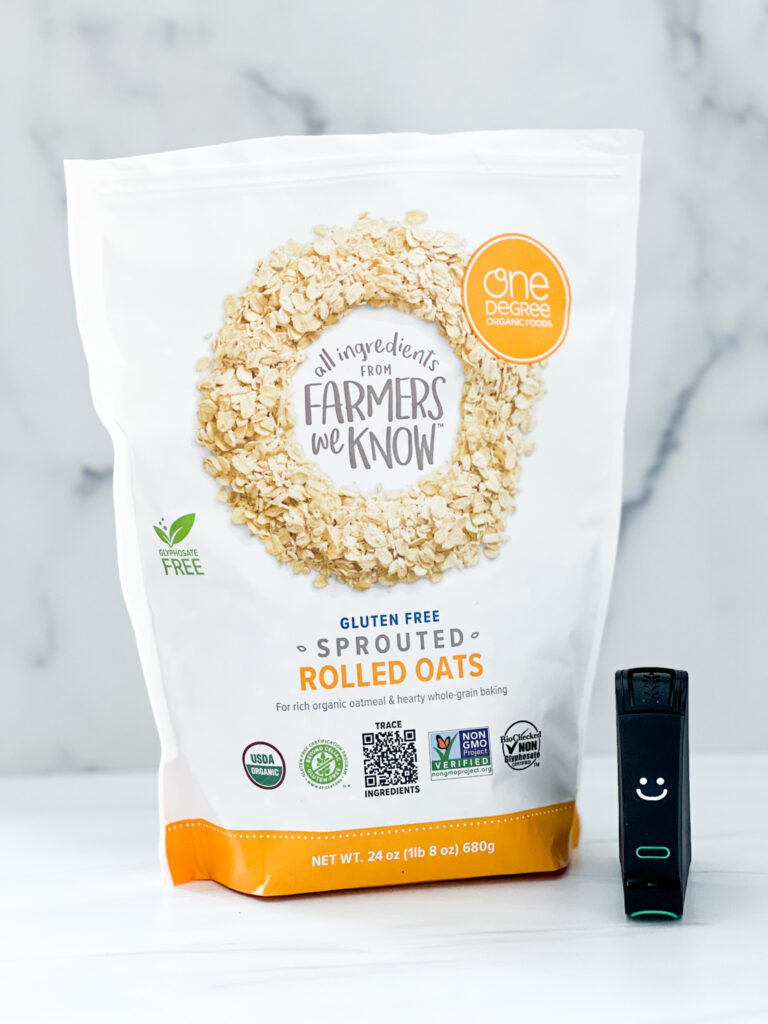
- Quaker Oats are mechanically and optically sorted commodity oats. See below for more details.
- Thrive Market oats are a mystery. I don’t know how they’re sourced, but they’re certified gluten-free by the GFCO. Nima didn’t find any hidden gluten.
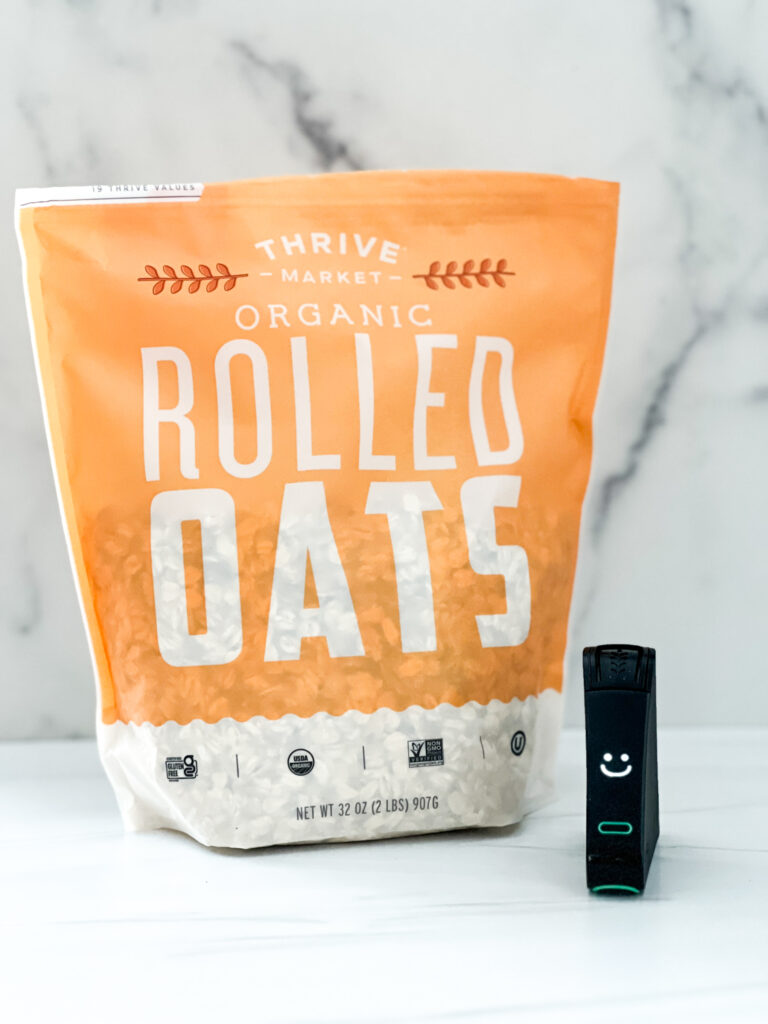
Are Bob’s Red Mill Oats Gluten-Free?
Bob’s Red Mill is a brand many people in the gluten-free community know and trust, and the brand uses a combination of purity and commodity oats to make its gluten-free products.
I took pause when I learned early on in my celiac journey that Bob’s Red Mill gluten-free oats were neither purity protocol oats nor certified gluten-free.
However, Bob’s Red Mill makes gluten-free oats safe for people with celiac disease and gluten sensitivities, and the company goes to great lengths to ensure its products are safe.
Bob’s Red Mill says its oats are batch tested before, during, and after processing using an ELISA Gluten Assay. The Gluten ELISA is a quantitative test that detects low gluten levels in food and beverages.
The company also says that before gluten-free items are released to retail, they’re tested again in a dedicated gluten-free quality control facility to ensure they’re free from gluten.
Critics will say that Bob’s Red Mill doesn’t go far enough in its testing for “hot spots” or the spotty presence of wheat that even the most stringent testing measures may miss. This criticism is misleading and unfounded because Bob’s Red Mill does a lot to keep the gluten-free community safe.
All of its gluten-free labeled products are processed and packaged in a dedicated gluten-free building that processes and packages nothing but gluten-free products.
Bob’s Red Mill says it only works with oat suppliers committed to practices for eliminating the presence of gluten.
“Our suppliers are innovative in controlling the presence of gluten through a variety of methods, including crop rotation management plans and the use of optical sorting technology. Regardless of our suppliers’ chosen methods for meeting our gluten-free specification, we require that each lot is tested and confirmed gluten-free before authorization for shipment to Bob’s Red Mill,” says a spokesperson in a written statement to Good For You Gluten Free.
Furthermore, many Bob’s Red Mill products are now certified gluten-free by the GFCO, with the company confirming that more products will be certified down the road “with time as logistics allow.” And while Bob’s Red Mill gluten-free oats are not (yet) certified gluten-free, the company currently sells 10 GFCO-certified products, including Bob’s Bars and Pan Baked Granolas, both of which contain oats.
Finally, I’ve tested Bob’s Red Mill oats several times with my Nima Sensor. Because of the continued controversy of gluten-free oats, I tested the oats again in 2022. The following package has a best-buy date of April 2022.
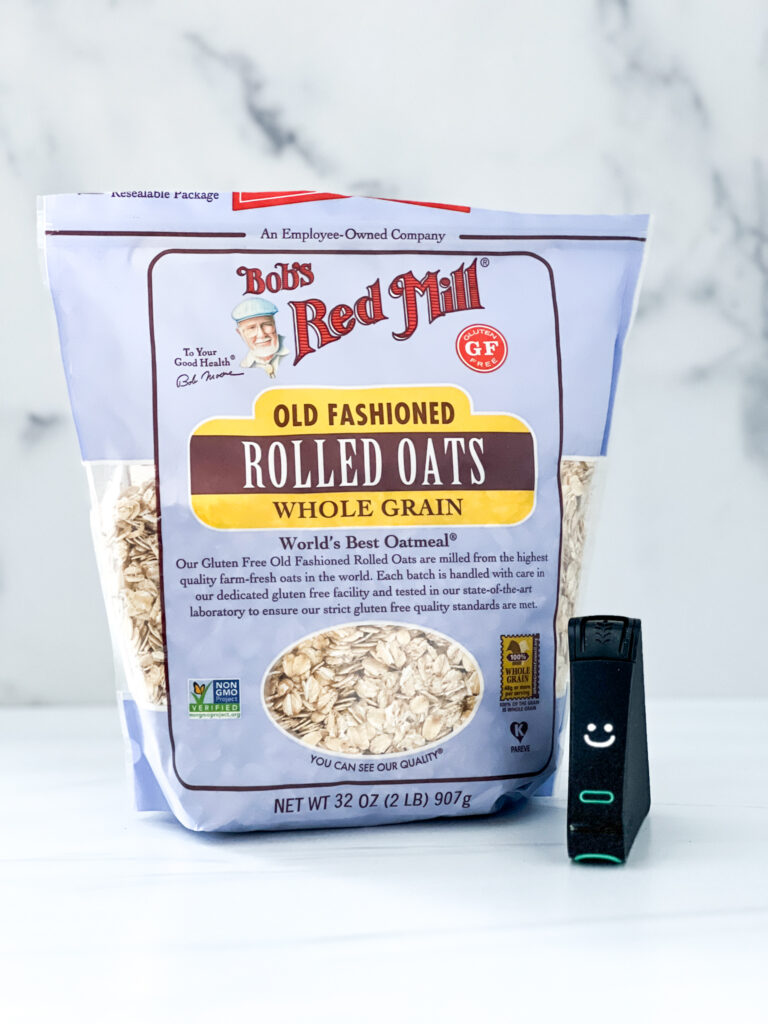
Bottom Line: Bob’s Red Mill oats are properly sorted and undergo rigorous testing to ensure they’re gluten-free and safe.
Are Quaker Oats Safe?
Quaker makes Quick 1-Minute Oats and several flavored instant oatmeals that are labeled gluten free. While not certified gluten free, Quaker says its commodity oats have been sorted and rigorously tested to be gluten free.
Quaker says, “Oats are inherently gluten free, but may come in contact with gluten-containing grains at the field, during storage or during transportation. As the world’s leading expert in oat milling, Quaker employs a breakthrough process to sort and clean the oats. This process uses mechanical and optical sorters to remove these stray grains based on density, color, and length, applying a sorting protocol that we believe to be unique to the industry.
“We confirm our capability to remove these grains with multiple quality checks throughout the milling process up through finished product testing so that our millers can confidently produce a gluten-free oat product that meets FDA standards. This includes testing individual samples from each production lot of our finished product. Only if each of those samples in the product lot passes analytical testing can the lot be released from the mill.
“Our milling expertise is unparalleled and is how we’ve been able to turn oats into Quaker oats. As is always the case, the quality of our products and the safety of our consumers is our number one priority. We take this seriously. It’s that care and attention to detail that we believe has helped earn us the trust of consumers for all these years.”
I also independently tested gluten-free Quaker Oats for hidden gluten with my Nima Sensor, and Nima returned with a smiley face (no gluten found).

Are the Oats Used to Make Cheerios Safe?
Cheerios is one of the most accessible cereal brands around, and most varieties of Cheerios are labeled gluten-free. The brand is also a sponsor of the Celiac Disease Foundation and proudly displays this on boxes of its cereal.
However, despite the gluten-free label, the Canadian Celiac Association (CCA) recommends that people with celiac disease or gluten sensitivity avoid Cheerios, even if it’s labeled gluten-free, due to (a) concerns about potential gluten in each box, and (b) due to what it says is General Mills’ unwillingness to be fully transparent in its testing methods.
Cheerios uses commodity oats, but that isn’t what concerns most people. Most concerning is that General Mills has been accused of not properly testing each batch to ensure all boxes are free from gluten. You can read more about the baffling testing process in this article by the Gluten-Free Watchdog.
On top of it all, the gluten-free community grew wary of Cheerios long ago after gluten made its way into nearly two million boxes, which General Mills recalled in 2015. The company blamed it on “human error.”
I highly encourage you to read my article about why Cheerios are controversial to understand the scope of this controversy and to maybe access – or reaccess – your stance on the beloved cereal brand.
I tested Cheerios and Apple Cinnamon Cheerios for hidden gluten with the Nima Sensor. You can see how they fared in my article, List of Gluten-Free Cereals.
Bottom Line: Some feel comfortable eating Cheerios, while others do not. It’s important to do what you feel comfortable doing and avoid judging those who do differently. Read Unpacking the Gluten-Free Cheerios Controversy; Is It Time to Reconsider Your Stance?
Are Safe + Fair Products Safe?
In January 2023, The Gluten-Free Watchdog found levels of gluten greater than 80 ppm in Safe + Fair’s Honeycrisp Apple Pie Granola. The brand says it uses oats certified gluten-free by a third party, and all its products are certified gluten-free by the GFCO. It’s unknown if the oats, another ingredient, or the manufacturing process is to blame for the Watchdog’s findings.

Questions to Ask Oat Manufacturers
If you want to eat oats while following a strict gluten-free diet, ask these important questions of any manufacturer making gluten-free claims regardless if they use purity protocol or commodity oats:
- Are the oats certified gluten-free by a third-party agency?
- Are there satisfactory practices in place to keep the processing and packaging of gluten-free oats separate from other products that contain gluten?
- Does the company batch test oats before they enter the facility and after processing? And do they use a reputable testing tool, such as ELISA?
- Is the manufacturer transparent in reporting the results of its tests?
If oats concern you, a little digging will help you understand how committed a company is to creating safe gluten-free products.
Why Can’t Some People with Celiac Disease Tolerate Oats?
A few people with celiac disease experience gluten cross-reactivity when they eat oats, meaning their body confuses the protein in oats (avenin) with the protein in wheat (gluten).
If you have celiac disease and cannot tolerate oats, it doesn’t matter if the oats are commodity or purity protocol oats, don’t eat them. You can get tested for gluten cross-reactivity, which I talk about in detail in my article, Understanding Gluten Cross-Reactivity and Gluten Cross-Reactive Foods.
Remember, not all of your digestive woes should be blamed on gluten. If oats bother you, consider if you might have a leaky gut or candida, for example, before giving up on this food group.
Rest assured, most people with celiac disease can tolerate oats just fine, including me. In fact, this study concludes that gluten-free oats can be tolerated by the vast majority of the celiac disease population, and oats can be a great addition to a balanced, gluten-free diet, offering up plenty of heart-healthy soluble fiber.
Deciding For Yourself
Ultimately, the decision to eat gluten-free oats – and whether to enjoy purity vs. commodity oats – is with you. This article aims to shed light on the controversies over gluten-free oats and help you make an educated decision about whether or not they fit into your gluten-free diet.
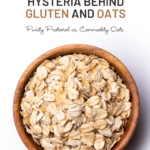
Josie, have you ever thought that maybe that is because you are allergic to oats?
This article is continually updated as new information becomes available. I really appreciate the tips. Keep ‘em coming.
Hey Jenny! Based on the recent GF watchdog tests for Trader Joe’s oats and GF Harvest oats this amazing and helpful post may need an update. Sadly 😞
This article is relevant: https://www.glutenfreewatchdog.org/news/oats-produced-under-a-gluten-free-purity-protocol-listing-of-suppliers-and-manufacturers/
Your style is so unique compared to other people I have read stuff from. I appreciate you for posting when you’ve got the opportunity. Guess I will just bookmark this web site.
Dispite oats in australia/new zealand not being permitted to bear a GF claim or get included within gluten free items in those particular countries. No test may be reliable with oats, Certified wheat free or not. I doubt anyone living in australia has thought of making an oat base dough ball then dissolving it into starch using water. I could bet it would all dissappear into oat starch with no gluten to withstand water. 100% starch would mean the statement of containing gluten shouldn’t have to be trusted. A video of how gluten impacts property of flour proves that a gluten free vegan dough ball dissappears into starch (part of flour not to withstand water).
Only GF marked containers. Be careful!!
Are all Quaker Oats gf? Or only the containers which say GF on the container?
It’s probably not the gluten. These products do not contain gluten. You may have a cross reactivity to oats or oat allergy. Have you looked into it?
I’ve bought 3 bags of Bob’s Red Mill Gluten-Free Oats and been burned twice. I quit buying oats period. Even his Gluten-Free Pancake Mix gives me the same symptoms of eating wheat bread; painful swollen itching joints, scorching headache, pregnant-looking bloated belly, etc.